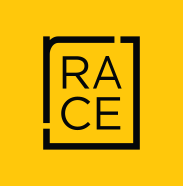Assignment: guidance that reporters receive describing what kind of story will be made, with whom they should speak, where and how. It may also be the focus on any fact.
Audience: method for measurement of affected people.
Briefing: set of information on a given subject, project or service.
Closing: when the journalists are producing or reviewing their articles that will be in their respective media. It may also be the moment that professionals are diagramming a magazine and “closing” the material to send to the printer.
Crisis management: strategy used to minimize negative impacts on the media, through the dissemination of the enlightenment of the company in an agile and objective way, in order to eliminate any controversy.
Editorial space: statement of opinion of a publisher about you and your business. In addition, a term for the media coverage generated by the news team. Editorial is also a text, made by the publisher, which summarizes and comments on the issues of a publication (usually in magazines).
Exclusive: news, interview or feature article that only a newspaper, magazine, radio, television or website can publish/present. Typically, this kind of highlight is previously negotiated by the interviewee’s media relations agency.
Fact Sheet: quarterly, semiannual or annual material from a company with the objective of disseminating relevant information, such as: profile, history, business area and results of a company, etc.
Interview: conversation between the interviewer and the interviewee in which questions are asked by the journalist in order to obtain information needed by the interviewee.
Key messages: keyword or phrase that the press, the company itself or the communication department are intended to be held by the public.
Media relations: its main task is to deal with the relationship management between an individual, organization, company, or government and the press.
Media training: simulations with the spokesperson, so that they have effectiveness as a communication manager, even if they are leaders in another area. It concerns about how the media works and which information the journalists look for and who are these professionals.
Meet and Greet: also known by some professionals as goodwill, is a kind of meeting, usually quickly, between source, press officer and journalist to propose stories, discuss the source and present ideas or views on possible articles.
News: informative text relating to an event on a situation relevant to the public of each publication.
Off: information provided by a source to a reporter and that when previously agreed with the journalists, can not be published or used in any way.
Press conference: meeting with the main target journalists in order to inform assertively and strategically what the company wants to disclose.
Press kit (Press information): kit with specific information given to the media by a company. Typically, it contains base material, photographs, illustrations, press releases and, in some cases, gifts from the company.
Press release: or News Release, or only release, is the most common written form, used in public relations, to announce news and information about products, services, companies, etc.
Press statement: objective text that reports the official position of the company, person or entity on a given subject.
Q&A: document that has possible questions and likely answers related to a subject, project or service of the organization.
Reputation: public image in relation to a person, entity or company.
Source: spokesperson who is trained and prepared to talk about a subject related to the company.
Source suggestion: is a PR tool in which you offer your spokesperson for a certain mailing list of journalists.
Spokesperson: representative of an organization who is an expert source, willing to comment about a specific issue to the press.
Stakeholder: also known as public of interest, it is the part that affects, or may be affected by the actions of an organization.
Story suggestion: written message to introduce a source or an idea of a story to one or more reporters.
Talking points: succinct statements that address key points on a given topic.



